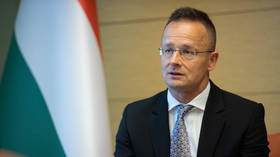FMQ Update
by Alasdair Macleod, GoldMoney:

The fiat money quantity is comprised of fiat money both in circulation and available for circulation, being parked at the central bank in the form of the reserves of depository institutions. The expansion of US$ FMQ since 1960 is shown in the chart below. [i]
Before the great financial crisis of 2008/09, FMQ expanded reasonably consistently at an average annual rate of 5.9%, shown by the pecked line. Excess reserves were virtually non-existent and required reserves were at little more than $10bn. Following the Lehman crisis, quantitative easing led to the accumulation of excess reserves as depository institutions sold bonds to the Fed and had their reserve accounts credited with the proceeds. Consequently, FMQ increased at a significantly faster pace than its long-term trend, leaving it $5,386bn above the pre-Lehman crisis trend at the end of last year.
It amounted to an accelerated rate of monetary stimulus, and while inflationist commentators are now fretting about the apparent slowdown in monetary growth, it must be admitted that the quantity of fiat money in circulation remains considerably greater than the long-term trend suggests is appropriate. The gap between the two quantities implies there is significant room for the Fed to tighten, and no doubt it was analysis of this sort that encouraged the Fed to do so last year.
The excess reserves component of FMQ began to correct earlier from its peak in August 2014, with the depository institutions’ reserve accounts at the Fed having contracted by over $1,100bn since then. Tapering was first mooted by Ben Bernanke in testimony before Congress in May 2013, but tightening, whereby the Fed sells bonds back to depository institutions while debiting the proceeds from their reserve accounts, only commenced at the start of 2018, three and a half years after peak reserves.
The period between peak reserves and peak FMQ (forty-one months to December 2017) saw an increase in FMQ of $2,236bn, a rise of nearly 17% over the period. Clearly, the decrease in bank reserves has increased FMQ by gearing up deposits through commercial bank lending, answering an earlier debate about the long-term consequences of quantitative easing. Shortly after the introduction of QE, on one side were the arch-inflationists who always argued in favour of the state issuing yet more money while being blind to the consequences, and on the other were the practical analysts trying to work out the implications of this new-fangled QE.
MMT versus reality
I recall that when the Fed first initiated QE, and excess reserves rose from zero to a couple of trillion dollars in under five years, there were concerns these reserves would one day be mobilised by the banks to expand credit. Assuming ten-times leverage on a reserve base this implied the next wave of credit expansion could amount to an additional $20 trillion plus of credit creation, and on-going QE would lead eventually to even greater levels of bank credit being generated.
Modern monetary theorists took a different view, arguing that the depository institutions as a whole could not utilise their reserves in this way. An example of the MMT approach is a paper by Paul Sheard, who at the time was Chief Global Economist at Standard and Poor’s.[ii] Professor Sheard argued that the level of bank reserves is not under the control of lending banks, but of the Fed itself. In evidence he cites an accounting identity, whereby a central bank’s assets must equal the sum of its liabilities, simplified as being bank reserves plus banknotes in circulation plus government deposits.
That bit is true as far as it goes. The mistake is in not recognising the ownership of the reserves. When a bank has excess reserves on deposit at the Fed, it is free to draw them down, and does not, as Professor Sheard stated, have to pass them on to another bank, replace them with physical cash, or lend it to the government so that the right-hand side of his equation still balances with the Fed’s supposedly immovable asset total.
If Sheard was correct, the Fed would not have to pay commercial banks the Fed Funds Rate on excess bank reserves. Nor would it have to mobilise reverse repos, a market tool central to the Fed’s liquidity policy. As a matter of fact, depository institutions are free to withdraw all their excess reserves, and redeploy them in money-markets, purchase commercial bonds, lend it to customers, or if they so choose to deploy them any way they like so long as it accords with banking regulations.
Professor Sheard is wrong, and we have no lesser authority than a paper released by the Federal Reserve Bank of Minneapolis, published over two years later than Sheard’s, in other words in the light of actual experience.[iii] To quote from the executive summary:
“Banks in the United States have the potential to increase liquidity suddenly and significantly—from $12 trillion to $36 trillion in currency and easily accessed deposits—and could thereby cause sudden inflation. This is possible because the nation’s fractional banking system allows banks to convert excess reserves held at the Federal Reserve into bank loans at about a 10-to-1 ratio.”
And it goes on to say:
“What potentially matters about high excess reserves is that they provide a means by which decisions made by banks—not those made by the monetary authority, the Federal Reserve System—could increase inflation-inducing liquidity dramatically and quickly.”
So, the MMT stuff was poppycock. Surely, on the evidence we should believe a paper sponsored by a division of the Fed. It transpires Professor Sheard has been deeply involved with advising the Japanese, serving on various government committees. His advice in 1995 was that Japan’s woes were due to “timid” monetary policy and stop-start fiscal policy.[iv] It appears Professor Sheard is an arch-inflationist, whose mathematical approach and views accord with the modern monetary theorists.
These errors are important to identify before proceeding to discuss future money supply trends, because there is a widespread but incorrect assumption held by inflationists that the Fed actually controls the expansion of bank credit through monetary policy. This is incorrect. The Fed attempts to influence demand for money by interest rate policy, and when it deems appropriate, expands or reduce the overall size of its balance sheet by asset purchases or sales, which is not the same thing as control.
If the commercial banks as a whole seek to reduce their reserve balances, then the Fed must either increase interest paid on excess reserves, increase the reserve requirements to reduce or even eliminate the excess, step up its reverse repo activity, or liquidate some of its assets.
It is the last of these, the liquidation of assets forced on the Fed by depository institutions that the MMT theorists failed to see as even possible. And subsequent to their misguided analysis, the banks were reducing their excess reserves on a net basis long before the Fed decided to tighten.
Why banks are not fully mobilising excess reserves
We can now understand that the American banking system, in theory at least, still has ample room to expand its lending and bond purchases. According to the Fed, required reserves last November were only $126.5bn, and excess reserves were $1,648.8bn.[v] However, bankers naturally wish to make every dollar work instead of leaving them idling at the Fed. Clearly, there are other factors at play.
Now that we have established that the creation of bank credit is not under the Fed’s direct control, we need to find the other reasons why US depository institutions are reluctant to draw down their excess reserves. There might have been an off-the-record agreement between the largest banks and the Fed, which may be concerned that if one big bank starts withdrawing all its excess reserves, the others will follow so as not to lose market advantage. To that extent, excess reserves may not be lendable assets.
There is another more solid reason, and that is the US banking system has undergone an overall transition from a money-multiplier basis of regulation to a new regime reflecting international Basel III capital and liquidity requirements. The Fed still requires a 10% reserve on bank deposit and checking accounts whose terms are less than seven days, net of cash balances in bank tills and vaults. But this now comprises a minority activity on bank balance sheets, which is where Basel III comes in. Therefore, excess reserves at the Fed are a handy means of retaining risk-free liquidity to comply with international banking regulations.
There is also a developing problem with the Fed trying to reduce its balance sheet at a time when the US budget deficit is running over the trillion-dollar level. The banks know from Fed tightening plans that they will have to collectively absorb roughly $150bn of Fed sales of Treasury bonds every quarter. After allowing for an additional quarterly supply in the bond market of a further $300bn from the US Treasury at a time when foreign buyers are losing their investment appetite, there is every reason for a far-sighted banker to preserve liquidity.
In other words, a combination of regulatory reasons and bankers’ far-sighted caution appears to be limiting bank credit expansion. The prospect of a flood of new US Treasury stock issued to finance the deficit and sales of existing bonds by the Fed is already crowding out private sector lending by contributing to banking caution. And this is why the Fed should be reviewing its monetary policy.
The future course of FMQ
Far from FMQ signalling there is ample room for depository institutions to draw down their excess reserves and gear them up into extra bank credit, we can see regulatory reasons why this cannot happen, and why systemically important banks might want to keep their powder dry to purchase US Treasuries in future. Meanwhile, the productive economy appears to be running into a brick wall.
Loading...


